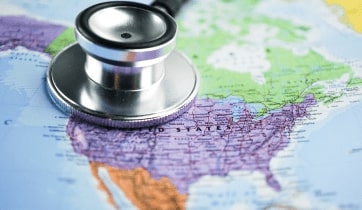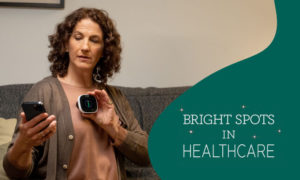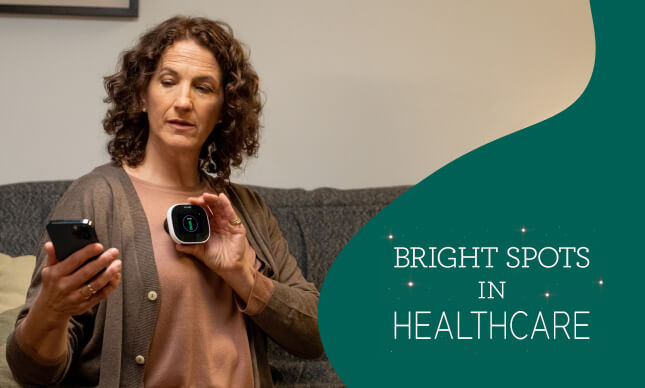Addressing the problem of rural healthcare deserts

Many Americans living in rural areas are medically underserved. Can telehealth alleviate the burden by providing virtual healthcare to patients, wherever they are?
Rural healthcare ‘deserts’
Rural healthcare disparities are a growing concern in America. Dozens of rural hospital facilities have closed over the past decade, and hundreds more are classified as vulnerable to closure. While rural areas are home to 20% of the US population, fewer than 10% of America’s doctors practice medicine in rural areas. The result is that 80% of rural America is considered “medically underserved,” a problem that worsens each year as fewer doctors choose to live in or practice in rural areas. Rural doctors are increasingly aging out of the profession, without being replaced by their younger counterparts, who usually opt to work in urban centers.
As a result of this healthcare disparity, rural dwellers contend with increased rates of chronic diseases, diabetes, obesity, and lowered life expectancy. For rural residents living many miles from the nearest hospital or medical center, a doctor’s appointment requires hours of driving in each direction and a day off work, making them less likely to seek medical treatment at all. In some cases, a single health center is the only place that provides medical treatment for hundreds, or even thousands of miles. A medical care desert creates critical gaps in hospital services, trauma care, maternal care, or pharmacy services, as well as impeding chronic care maintenance for patients with long-term conditions.
Remote clinics: A desert oasis
Remote clinics are increasingly being used to bring coverage to medical deserts. Telehealth can connect patients with hospitals located miles away, whether for urgent, non-life-threatening cases, specialist appointments, or to enable patients to get a second opinion. In many cases, this can mean the difference between a patient receiving timely care, or going without any treatment at all.
Consider the case of a diabetic patient who lives a great distance from an endocrinologist. Telehealth can be used to monitor the patient’s blood sugar levels and allow the patient to communicate with a doctor. It can determine whether medication changes are warranted and help decide whether an in-person visit is needed at this time. Finally, it can coordinate the patient’s care by seamlessly integrating exam data with the patient’s electronic health record, allowing for a more accurate picture of the patient’s overall health and tracking changes over time. Without telehealth in the picture, one can easily imagine how this patient’s condition could spiral dangerously out of control.
Game-changing access
Medical deserts also exist in areas in which urban dwellers lack access to adequate healthcare infrastructure due to their economic situation. Remote care through telehealth provides care to underserved children, improving educational and health outcomes. In one instance, Southeast Michigan’s Henry Ford Health System implemented school-based virtual healthcare in 14 schools, bringing medical care to 10,000 new students in less than six months. Telehealth is an affordable, scalable solution that can easily bring healthcare access to large areas. When done right, telehealth saves money, reduces parent time away from work, and limits student time away from class.
Henry Ford’s school-based telehealth met the needs of thousands of families, many of whom live below the poverty line and are English language learners. Parents of the students served often lack access to pediatric care, forcing them to seek out urgent care or ED treatment. Emergency care in non-emergency situations involves long wait times, runs up high medical bills, and ties up provider time that is needed for true emergencies. Care received in the ED is also disconnected from other care a patient receives, leading to poor condition management.
Superior telehealth
For telehealth to truly fill in care gaps in underserved and rural areas, it must provide accurate examination ability. Henry Ford Health System chose to partner with TytoCare because it is the only telehealth solution that provides real-time video visits that allow caregivers to connect with physicians and nurse practitioners. TytoCare’s peripheral tools provide reliable exam data that allows nearly 90% of students to return to class, lowering absenteeism and improving educational outcomes.
TytoCare is simple and intuitive enough to be used by non-medical staff, allowing it to be deployed by schools with or without an onsite nurse. TytoCare already provides telehealth in rural communities in many US regions, bringing accessible, affordable care to more people, no matter how far they live from a major medical center.
Addressing healthcare deficiencies
Sanford Health is one of America’s largest rural health systems, serving 1.2 million people across 250,000 square miles in Iowa, Minnesota, and the Dakotas. Sanford Health has partnered with TytoCare to provide virtual healthcare since 2019. TytoCare enables Sanford Health to improve medical connectivity for rural areas, with fully remote exams and antibiotics prescriptions to those in medical deserts.
The newly-designed $350-million Sanford Virtual Care Center includes a 60,000-square-foot facility and five rural hubs that will focus on meeting the needs of underserved populations. The center will work to attract and retain healthcare providers to transform the healthcare experience for rural residents using the most advanced technology as close to home as possible. As Bill Gassen, president and CEO of Sanford Health shared, “It is crucial that we break new ground in how we bring the best of today’s digital world directly to our patients, with seamless, convenient, and world-class care for the communities we serve.”
When we consider how to improve healthcare for rural communities in the face of mounting challenges, we ought to consider the approaches used by Sanford Health and the Henry Ford Health System. TytoCare can easily be deployed at rural healthcare hubs to connect patients to clinicians. TytoCare enables staff to make informed medical decisions and to triage care so that onward referrals are made only as needed. Partnering with TytoCare enables more providers at healthcare hubs to offer lifesaving telehealth for rural communities and other medical deserts across America.












